SAFE MONEY INVESTING: An Interview with Mike Moorhead of Tippett Moorhead

For years, itâs been quite clear to me that one thing that almost none of us do enough of is saving… putting money away for our futures… for our retirement years. And I think I know why we donât save more that we do… itâs because weâve started to believe itâs an almost impossible task. Every time we save some money and invest it, we end up losing it when what turns out to be another bubble pops and we end up with gum all over our collective face and in our hair.
Oh, I know there are other reasons why weâre saving less than we should these days… like for one thing, weâre making less and therefore we have less to invest. Fair enough. But, the fact is that back in 2005, when we werenât saving much better than we are today, at least we could console ourselves with the idea that our retirement savings were in our real estate assets. Weâd pay off a home or two and that would provide us with a pile of cash to use during our retirement years, or maybe weâd have a rental or two from which the rents would generate a nice portion of our retirement income.
So, since American homeowners,as of a year or two ago, had lost something north of $10 trillion in home equity… and even with the recent bounce off the bottom in some areas related to home values, the losses are still inconceivably large… why arenât we saving more than we are, knowing that we wonât be able to count on our homes to deliver what we once thought they would? What are we waiting for and why would we wait?
I even talk with homeowners regularly who, although they are still living in their homes, havenât made a mortgage payment in two, three, or four plus years, and even they often report that they havenât been saving much if at all. Itâs true that many in this group are part of the long-term unemployed population in this country, and many that have been able to find work are making a fraction of what they were making before the meltdown. And some have been hit by life events, such as illnesses and injuries… some have seen their marriages fall apart and are struggling to make the ends of two households meet.
I understand all of that, and Iâm sincerely empathetic about everyone in such situations, but it still doesnât answer the question… why arenât we all saving more? We know weâre not getting younger. Why arenât we all doing more to put money away to ensure a more secure financial future? Maybe not a lot more… but why not a few hundred more each month? After all, if youâre not making a mortgage payment anymore, for whatever reason, it would seem that you could probably sock away at least an extra $500 a month, right?
Well, like I said in the beginning of this article, I think I know why weâre not saving more, or at least one of the reasons why we donât… because weâve learned the hard way that we canât do it. It never works out the way itâs supposed to. I agree and Iâm with you on this… itâs almost like itâs become… whatâs the point?
Ever since I was in my 20s, supposed experts have been telling me what I should do in order to save for my future. Invest in âqualityâ mutual funds. Diversify my investments. Invest for the long-term. And everything will be just fine.
Well, hereâs what I have to say about that advice… itâs nonsense… doesnât work. Oh, it works during the good years, everything works during the good years. The problem is that in the down years… like when the S&P goes down by 27 percent for the year… I get almost wiped out and never recover.
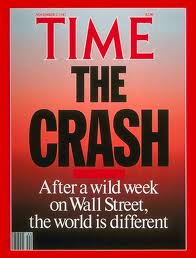
And as the S&P is falling and Iâm watching my portfolio drop in value like a thermometer in Chicago come January, thatâs when everyone wants me to remain calm. Donât sell at a loss. Donât miss the bounce. And blah, blah, blah whatever else. The fact is that Iâve come to realize that, while the up years are fine, itâs the down years that make getting ahead essentially impossible.
At 52 years old, Iâve been around to see at least three big time investment bubbles. The first was during the late 1980s and ended with the S&L crisis. And to be entirely honest about it, Iâm not sure what I learned from that bubbleâs demise expect that what the stock market giveth, it could also taketh away in a hurry.
The next bubble, which popped in April of 2000, was much more of a learning experience because not only did it teach me about how risky the stock market was, it also made me feel like an idiot for buying into ideas that I never really understood in the first place. I mean, how could a company like Pets.com expect to make money by shipping 50 pounds of kibble across the country overnight for free? Or, Furniture.com… I mean, was the World Wide Web really going to make people not feel the need to sit on a couch before buying it? And having my groceries delivered to my door didnât really seem like a new idea, it just seemed like a more expensive way to get my groceries.
Even with the common sense of it all seeming to have been staring us in the face, we bought into the whole ânew economyâ of it all and soon found out that it wasnât a ânewâ economy after all. It was the same sort of speculative market that had been around since the now infamous tulip bubble crashed in Holland way back in 1637, and we went from planning to retire early to not knowing if weâd ever be able to retire at all.
After the dot-com bubble popped in the Spring of 2000, I heard many of my friends and neighbors swear off investing in the stock market for good… this time the pain seemed to be great enough that they seemed to have learned the hard way that the stock market was just a Wall Street casino where they could be wiped out at any moment… and didnât even get free drinks while they were gambling. The mistakes they had made during the late 90s were mistakes they pledged, often over cocktails, never to make again.
The recession that we fell into when the dot-com bubble ended was going to be a deep and long-lasting one, as far as I could tell. We lost over $7 trillion in consumer wealth and those that lost were in no hurry to dive back into the stock market, even the oneâs that still had some money left with which to invest.
Of course, then came the unthinkable tragedy that took place on 9-11 and after that, even though things got even worse for our economy, it felt different somehow. We had been attacked and were at war against an âAxis of Evil,â as our president phrased it, and we knew we would somehow pull together as we had in the past to make this country great again.
When President Bush came on television during the months after 9-11, he assured us that we would do whatever we had to in in order to make our country safe and bring those responsible to justice. He even said, encouraging us with a smile, that we should feel safe… that we should go shopping and take vacations. And since credit had remained unchanged, many of us… me included… did exactly that… we took our vacations and since we werenât investing in the markets again, we barely changed our spending habits if at all.
Then Fed Chair Alan Greenspan, whose use of monetary policy had led our nation from bubbles popping back to prosperous times since 1987, was at the helm and in January of 2001, had supported President Bushâs tax cut, saying that the federal surplus was large enough to pay off the national debt and support the decrease in taxes. But, after 9-11, and the flurry of corporate scandals that followed that horrific event, Greenspan saw that we were headed into deeper trouble and began lowering interest rates… taking them all the way down to 1 percent by 2004.
I have to admit that I didnât foresee what that would lead to, but by 2005 it was obvious what was happening… collectively we thought that we had figured something out about investing for our futures… real estate was an investment that could not go down to zero no matter what. While it was undeniably risky to buy and hold stocks, having seen the total demise of companies from dot-coms to Enron, buying homes and other real estate just didnât incorporate the same sorts or degrees of risks. A home would always be worth some significant amount, and once it was paid off, we could rent it out and have an income stream to depend on in retirement.
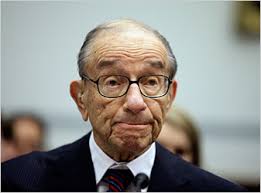
With rates near zero, and enormous demand for all things real estate related apparent, money flooded into the space and in what we considered a flight to safety, we went shopping for larger homes, second homes, third homes and all sorts of investment properties. With the perception of such safety abounding, soon anyone could qualify for a mortgage, which meant everyone could express their demand for bigger, nicer, and more homes… so predictably prices had nowhere to go but up, which in turn fueled the bubble.
What we didnât bother to pay much attention to was Chairman Greenspanâs philosophy about the regulation of financial markets… he didnât have much use for it, in fact, he found it largely unnecessary believing that the markets would act in their own best interests and in essence regulate themselves.
William âBillâ Black, a former regulator intimately involved in cleaning up the S&L debacle, in early June of this year, wrote an article about the many ways that Fed Chair Greenspanâs belief in whatâs referred to as the âefficient market hypothesis,â which means that financial markets regulate themselves and therefore automatically self-correct, led to our most recent crisis, among others. I interviewed Professor Black on these and other topics in July of 2012, and his recent article referenced above, appeared on Naked Capitalism, on June 6th of this year. (Both, I think, are very much worth taking in.)
But, if you only want the Cliff Notes version, if you will, then a recent article in Forbes makes itâs easy to say and see that Alan Greenspanâs influence over 25 or more years, helped create an environment for financial markets severely lacking in regulation. Professor Black points out that Greenspanâs track record began when he was âa de-facto lobbyist for Charles Keating,â who was among those responsible for the fraud that ended up taking down the entire S&L industry.
Black also documents how Greenspanâs opposition to the attempts by Brooksley Born, who was then chair of the Commodities Futures Trading Commission, to crack down on fraud and regulate the derivatives markets, including the market for credit default swaps, led to the creation of a âregulatory black hole,â which Black defines as âa place where elite criminals could commit their crimes under the cover of perpetual night.â
As Forbes reported… âBlackâs conclusion is devastating: âAlan Greenspan had no excuse for assuming fraud out of existence, and his exceptionally immoral position on fraud and regulation proved catastrophic to America and much of the world.ââ
By the way, one of the best ways to see and hear about what caused the financial meltdown that began in 2007 and whose impact we are still feeling today, is to watch the movie, âThe Flaw,â which is available on iTunes for $9.99, and totally worth twice the price, in my opinion.
We the American middle class, however, werenât paying much if any attention to any of this as it was going on, and really, why should we have at the time? We were, for the first time in our lives, being offered the means to express our demand for larger homes, along with second homes and more, all of which were safe ways to invest for our financially safe futures.
We knew that home prices could come down somewhat in future years, after all they had before in the early 1990s, but they always bounced back fairly quickly and again… but they couldnât go down to zero and certainly wouldnât fall by half essentially overnight… or so we thought.
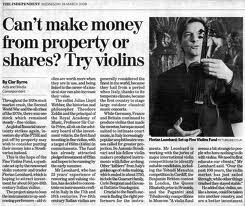
By the summer of 2006, the Fed had raised interest rates 17 consecutive times and the housing bubble had begun to deflate, with homes remaining on the market longer and longer, and prices cooling as a result. And if that had been all that had happened, we would likely have had only a housing bubbleâs demise with which to contend over these last few years, but it was not all that would transpire.
On July 9th and 10th of 2007, the two leading credit rating agencies, Moodyâs and Standard & Poors, during a press conference held in London, downgraded significantly the ratings that had been placed on 1,032 bonds backed by sub-prime loans. Investors around the globe in essence created a run on the market for mortgage backed securities, which soon led to the collapse of the market for Collateralized Debt Obligations (âCDOsâ).
The expert talking heads on Frontline at the time described what had happened as âthe abrupt repricing of risk,â and abrupt was the understatement of the century. Nothing like this had ever happened before and within weeks, central bankers were pumping hundreds of billions in liquidity into banks and broker-dealers in an attempt to stop the financial markets from freezing up, but in the end there was little that could be done, short of the U.S. government stepping in to guarantee all triple A ratings, something they had no appetite for at that time.
By the time homeowners realized what was happening, the secondary mortgage market had frozen solid, banks were hoarding cash and had stopped lending, and without the availability of mortgages or the ability to refinance a mortgage, prices were falling fast and for many new American homeowners, there would be no way out except foreclosure.
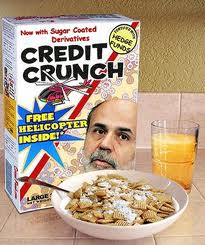
Of course, that led to a reduction in consumer spending, which in turn caused companies to start laying off significant portions of their workforces, and unemployment was now rising as fast as home prices were falling and credit was tightening… the perfect storm, if you will.
(By the way, this past year, I interviewed former chief economist at Treasury during the last two years of the Bush Administration, Phillip Swagel, on this topic and itâs certainly worth hearing what he has to say. I also interviewed David Min on the origins of the crisis in three parts. Among other things, David is a former member of the Senate Banking Committee and Joint Economic Committee of Congress and was right there when the lights went out, so if you havenât listened to his take, you really should, as well.)
But, for the purposes of this article… you might reasonably say… so what… whatâs done is done. However it happened… it happened… so what am I supposed to do now when it comes to saving to create a more secure financial future? Â
The DOW is at least intermittently breaking through new highs… but beyond Fed Chair Bernankeâs quantitative easing that pumps some $80 billion in and out of our financial markets on a monthly basis… Iâm not sure why. The goings on in the EU appear tenuous at best, but who knows what will happen over there, or happen over here as a result.
Weâve certainly got a bond bubble with which to contend, and the reactions to Fed Chair Bernankeâs speech just a few weeks back caused all sorts of gyrations and commentary in the financial press. PIMCO, the worldâs largest bond funds have experienced record withdrawals for the second quarter… reports showed that the yields on long-term Treasuries rose… the 10-year note had the worst week since June 2009… and the stock market, for reasons Iâm not entirely sure of… took a dive.
No matter how you slice it, the yield on the 10-year U.S. Treasury bill has jumped almost 50percent over the past 12 months, so mortgage rates can only be rising at least somewhat sharply.
As Iâve written countless times, along with many others, our housing markets have been propped up largely by investors who are either buying to flip at the bottom of the market, or to hold and rent the properties theyâre acquiring. Either way, investors by themselves do not constitute a recovery in the housing markets. Even the National Association of Realtors (âNARâ) shows that first time buyers are only making up 28 percent of home sales in May of this year… as opposed to the same time last year when they accounted for 34 percent of home sales.
In May/June the average rate on a 30-year mortgage went from 3.59 percent to 4.24 percent causing the Refinancing Index to crash by almost 40 percent, and mortgage applications to decrease by 3-4 percent week over week. FHA loans are a lot more expensive since Juneâs jump in their required insurance premiums, and that canât be good for the volume of sales financed by FHA loans, although it certainly might be good for the FHA in the longer run.
If youâve been counting on the ongoing recovery of the housing markets, you may want to read, âGood-Bye Low Mortgage Rates; Good-Bye Hosing Recovery,â published June 21, 2013.
On July 5th, Phillip Swagel, writing in the New York Times, offered some explanations for whatâs going on and how investors are reacting to announcements by the Fed. He acknowledged that the jobs report was good and that was certainly a part of what caused Bernankeâs comments to hint that QE was never going to last forever. But Professor Swagel also was quick to mention that the jobs report was far from great.
Among other things, Swagel pointed out that we still have 8.2 million people working part-time, but very much wanting a full-time job… to say nothing of the workers classified as âdiscouragedâ that would be expected to re-join the participation rate as the economy strengthens. (Remember, once workers report that they have stopped looking for employment during the prior month, they are classified as âdiscouraged,â and removed from the participation rate, which can make it look like the unemployment rate went down, but the decrease is only because weâre not counting them as trying to work any more.)
According to Swagel…
âSuch a rebound in the labor force participation rate, incipient in Fridayâs data, would keep the unemployment rate elevated and hold back wage gains and inflation.â
And it might go without saying, but Mr. Greenspan has come out publicly as of March 13, 2013, saying that even with the record high stock prices, investors should not worry about any sort of bubble or âirrational exuberance.â In Alanâs view, stocks are still âsignificantly undervalued.â But then… when arenât they, Alan?
I donât know about you, but Greenspan telling me not to worry… does almost nothing for my propensity to worry or not worry. Mostly I just try to stay away from whatever heâs talking about. And you are certainly free to do as you please, but if you want my two cents on the DOW at over 15,000… I would tell you this…
If youâre loving the DOW over 15,000… if thatâs what has you all excited and feeling like a junior Buffett… then if you want to keep feeling that way… get out now. Itâs no secret that the disconnect weâve all seen between the underlying economic data and the record stock prices for the most part comes down to the Fed and its monetary fire hoses. And since each round of QE has a slightly reduced impact on the markets, it would seem to me that from here, thereâs more downside risk ahead than upside potential.
Once again… you do whatever you want to do with your money thatâs in the stock market, but Iâm just saying that youâre a lot gutsier than I am about such things if youâre playing the game today with anything but your mad money. If itâs your financially secure retirement portfolio weâre talking about, then Iâd have to say that youâre working without a net at a height from which a fall could kill you… or worse… have you looking for a job as a Wal-Mart greeter in your late 70s.
FACT: We ALL have TOO much of our savings subject to market risk.
If thereâs one thing Iâve come to realize as a result of this last financial meltdown, itâs that weâve all got too much of our accumulated wealth subject to the risks inherent to the stock market. And I think most of us know that to be the case, too. We donât know why the market is up or down on any given day… we hear pundits theorize as to why things are happening one way or the other, but we only get such news after the fact, far too late to have done anything about it.
And as far as the idea of âdiversificationâ goes… phooey! How can anyone diversify inside their 401(k) plan when the menu of investment alternatives all seem to correlate… when one goes down, so do the rest. How should I diversify properly? Should I own timber? Yeah, right… Iâm sure Iâll do great learning about the timber markets.
So, now thereâs a âbond bubble,â thatâs about to pop. So what? And the Dow is flying high… until it wonât be anymore… and then what?
Well, there are investment vehicles that provide real answers to this situation, and Iâm convinced that if more people knew about them, theyâd use them and their financial futures would be that much more secure. Theyâd sleep better knowing that their future doesnât depend solely on what the stock market decides to do at any given moment.
Every single one of us could use more SAFE MONEY in our investment lives… we all have far too much risk we canât control, and barely understand.
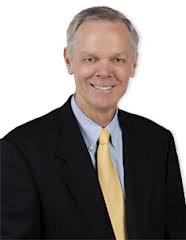
My guest on this Mandelman Matters Podcast is Mike Moorhead, a senior partner in the firm, Tippett Moorhead, which is based in Orange County, California, but works with both individuals and companies all over the country, creating savings and investment plans based on SAFE MONEY strategies. Iâve known Mike and his partner Don Tippett for over a decade, and I can tell you that these are really smart people when it comes to structuring plans that help people reduce the amount of risk associated with their savings and investment plans. Â
Mike has spent the last 35 years in the financial services industry, and during that time he has worked with countless Fortune 500 executives at some of the largest corporations on the globe. A few years ago, he and Don Tippett sold their firm to Prudential, and now theyâve come back to build a company that will do the same for smaller and mid-size companies and individuals that they did for so many large conglomerates.
We should all listen to what they have to say, because few of us are handling this area of our lives in the best way we can… and they are literally and unquestionably, experts at helping people secure a comfortable retirement based on SAFE MONEY, and away from the risks of the stock market that weâve all come to know… and hate… over the last 30 years.
CLICK PLAY BELOW… and tune into the first 30 minute podcast with Mike Moorhead of Tippett Moorhead as I ask him to explain why he wants people to understand there are ways your money can be invested, but remain SAFE MONEY.

For more information, you can reach Mike Moorhead at Tippett Moorhead by calling 949-209-9851… or contact the firm on line at TippettMoorhead.com. Theyâre very easy to talk to… and tell them youâre a Mandelman Matters reader and I promise theyâll be happy to help in any way they can. This is a chance to get answers from the top pros in the industry, so don’t blow it off… contact Mike and get the answers you need.
Mandelman out.


